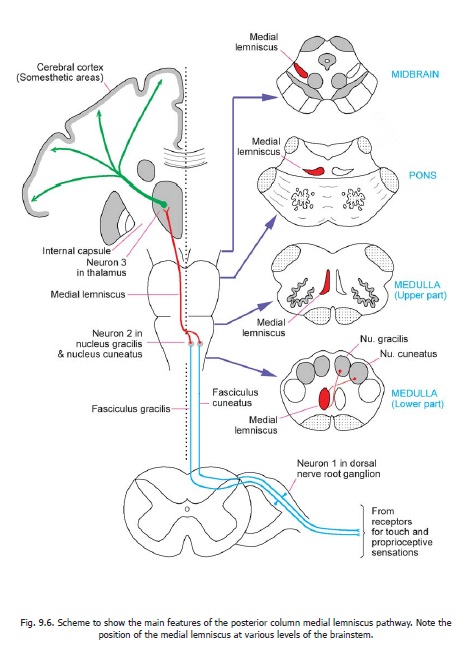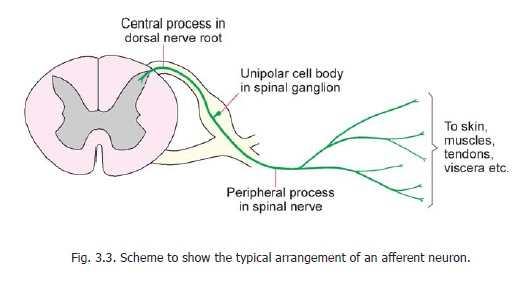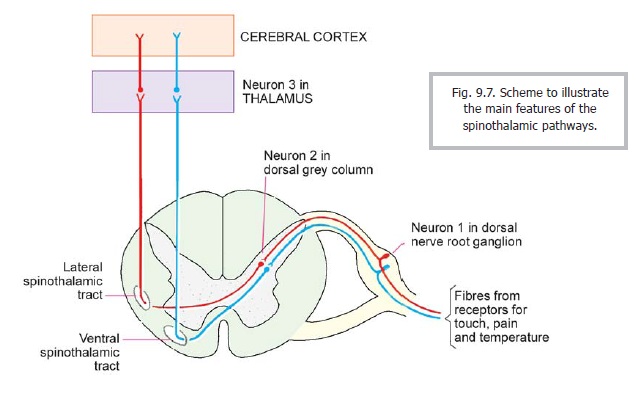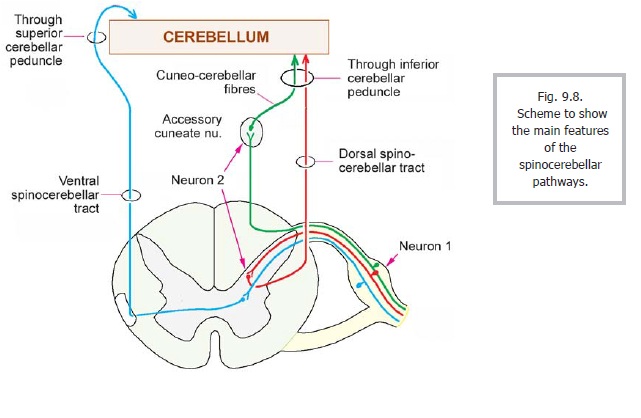Chapter: Human Neuroanatomy(Fundamental and Clinical): Tracts of Spinal Cord and Brainstem
Ascending Tracts
Ascending Tracts
Introductory Remarks
The ascending tracts of the spinal cord and brainstem represent one stage of multineuron pathways by which afferent impulses arising in various parts of the body are conveyed to different parts of the brain. The first order neurons of these pathways are usually located in spinal (dorsal nerve root) ganglia (Fig. 3.3). We have seen that the neurons in these ganglia are unipolar (pseudounipolar). Each neuron gives off a peripheral process and a central process. The peripheral processes of the neurons form the afferent fibres of peripheral nerves. They end in relation to sensory end organs (receptors) situated in various tissues. The central processes of these neurons enter the spinal cord through the dorsal nerve roots. Having entered the cord the central processes, as a rule, terminate by synapsing with cells in spinal grey matter. Some of them may run upwards in the white matter of the cord to form ascending tracts (Fig. 9.6). The majority of ascending tracts are, however, formed by axons of cells in spinal grey matter. These are second ordersensory neurons (Fig. 9.8). In the case of pathways that convey sensory information to the cerebral cortex the second order neurons end by synapsing with neurons in the thalamus. Third order sensory neurons located in the thalamus carry the sensations to the cerebral cortex. The following additional points may now be noted.


1. Having entered the spinal cord, the central processes of the first order neurons may ascend or descend to end in higher or lower segments of the cord. Alternatively, they may divide into ascending and descending branches.
2. The axons of the second order neurons may enter white matter on the same side, forming an uncrossed tract; or on the opposite side, forming a crossed tract.
3. Internuncial neurons may be interposed between the main neurons of the pathway.
4. The fibres of the tract may give collaterals to various masses of grey matter.
5. In the case of the head (and other parts supplied by cranial nerves) the first order neurons are located in sensory ganglia situated on the cranial nerves. (In some of these ganglia viz., cochlear and vestibular, the neurons are bipolar, not unipolar as in most ganglia). The central processes of these neurons end in relation to afferent nuclei of cranial nerves. The neurons in these nuclei constitute second order neurons.
6. The neurons of the mesencephalic nucleus of the trigeminal nerve are believed to be first order sensory neurons.
7. Only those afferent impulses which reach the cerebral cortex are consciously perceived. One exception to this may be perception of some degree of pain in the thalamus. Afferent impulses ending in the cerebellum or in the brainstem influence the activities of these centres.


Related Topics